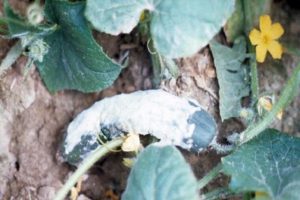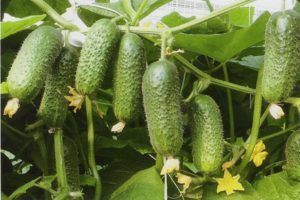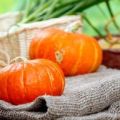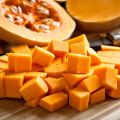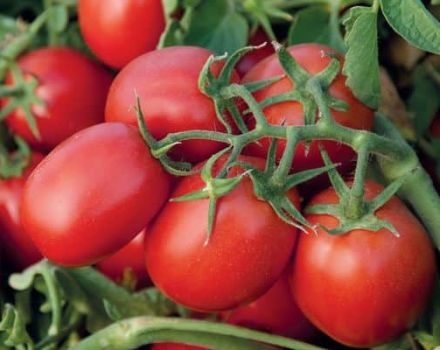Description of the African Melotria cucumber variety, its features, properties and growing rules
The African cucumber Melotria is still a novelty in the gardens. It is decorative. A powerful vine wraps around the arch in a short time. The fruits are like small watermelons. Pumpkins and root vegetables are edible.
What is interesting about the curiosity?
This cucumber is an African native. Grows in the equatorial zone. Belongs to the pumpkin family. At home, a perennial plant, in Europe it is cultivated as an annual.
There are 80 known varieties of mouse watermelon. In the middle lane, one is grown - the Hummingbird.
Description of watermelon cucumber:
- vigorous liana (grows up to 3 m);
- stem 1.5 cm in diameter, pubescent;
- leaves of a triangular profile, covered with villi;
- flowers are bright yellow, male and female on the same plant;
- with simple care, the plant produces a yield of 5 kg / bush.
Melotria prefers sunny places, but tolerates partial shade. Female flowers grow one by one, male flowers grow in bunches. The cucumber is pollinated by bees. Ties watermelons himself reluctantly.

Mass harvesting of fruits begins 2–3 weeks after planting. Mini pumpkins ripen together. If desired, fruiting can be extended. The watermelons are harvested, the lashes are cut, and nitrogen is added. After 3-5 days, Melotria will begin to set new fruits.
What attracts the edible parts?
Melotria has edible fruits and tubers. Description of mini pumpkin:
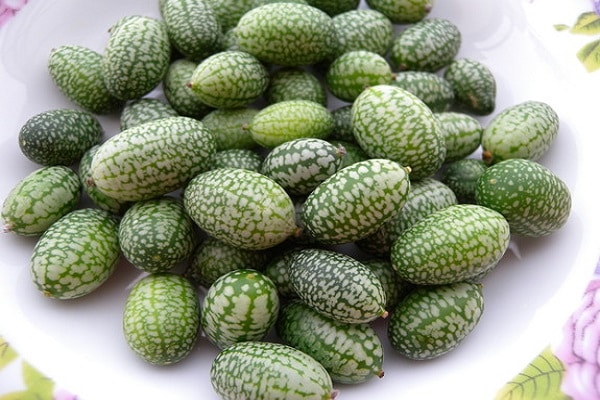
- elongated fruits;
- color - pale green with dark green stripes;
- rough to the touch, thornless;
- combination of taste of cucumber, melon, radish with sourness;
- the size of an African cucumber is 2.5–3 cm.
Plants are actively used for landscaping the site. Summer residents organize living screens, divide the space into zones, braid gazebos and pergolas.
Gardeners are attracted to mini-cucumbers for their unusual taste and benefits. The fruits contain:

- fluorine, phosphorus, potassium, magnesium, iron, sodium;
- vitamins PP, C, A, B1, B2, B6, B9;
- pectins.
The calorie content of a mouse watermelon is 14 kcal. The value of Melotria: reducing the feeling of hunger and saturating the body with useful substances during diets.
The gardeners are happy with the purpose of the fruit. They are delicious fresh and pickled. Unusual sourness is revealed in hot dishes (stews, hodgepodge).
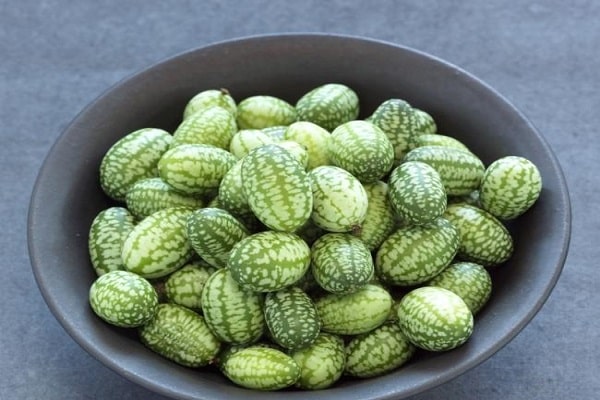
Root crops are also suitable for consumption. They taste like sour radishes. Experimental gardeners prepare fresh salads with tomatoes and onions. The edible parts of the mini pumpkin need to be processed immediately: they will spoil soon.
Mini cucumbers are tasty 2-3 days after growing 2-3 cm. Gardeners collect them first. After the return of the harvest comes the turn of the tubers.

Healing properties of Melotria
Studies have shown the beneficial properties of mouse watermelon.They are due to the chemical composition. Noted:
- Cucumber contains a lot of fiber. Regular consumption of Melotria improves intestinal peristalsis. Reduces hunger with diets.
- Cucumber lowers blood pressure. Cleans blood vessels.
- The combination of chemical elements enhances immunity, has an antibacterial effect.
- Mini pumpkin is irreplaceable in cosmetology. Masks based on it cleanse and tone the skin.
- Relieves swelling. Melotria is a mild diuretic.
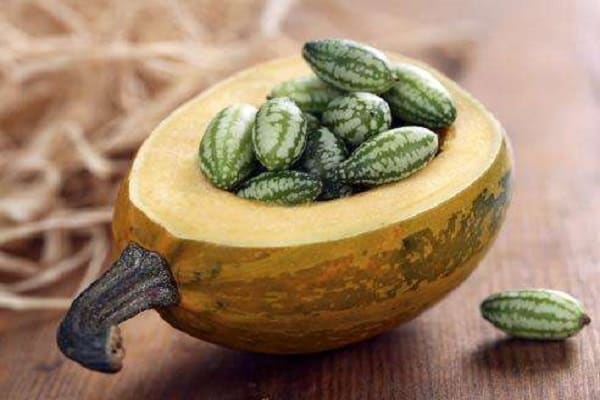
Mouse pumpkin is not recommended for people during an exacerbation of renal disease, after a heart attack. Pickled or pickled cucumbers are contraindicated in pregnant women. Melotria is undesirable for acidity, stomach ulcers, gastritis.
What does a cucumber like?
Mini pumpkin is a heat-loving plant. In the southern regions, cultivation is permissible in a seedless way. In other regions, preliminary preparation is required. Melotria Hummingbird is a variety. Gardeners are encouraged to collect seeds.
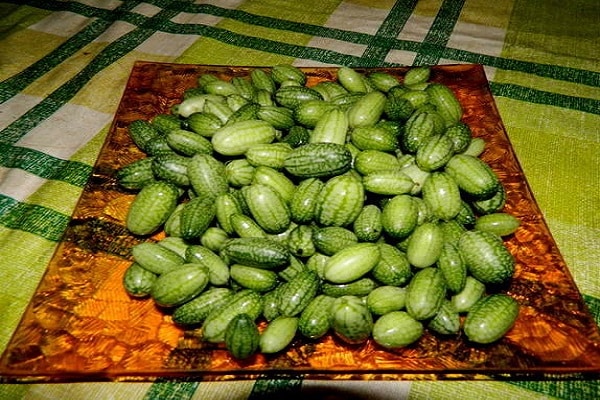
Sequencing:
- prepare your seeds (disinfect in a pink solution of manganese-sour potassium, hold for 30 minutes in a growth stimulator);
- prepare a nutritious soil as for a regular cucumber;
- spread the seeds on top, sprinkle a little with sand;
- water with a spray bottle;
- when 2–3 true leaves grow back, split them into separate cups;
- it is required to harden seedlings, highlight;
- plant in open ground in late May - early June;
- planting according to the scheme: 60 cm X 60 cm;
- watering is required (every 2 days 10 liters under a bush).
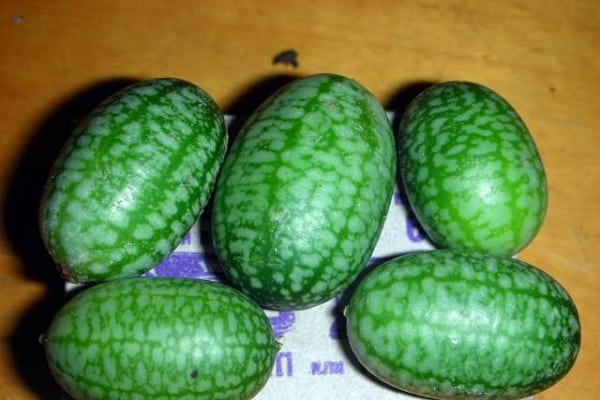
It is not required to pinch the whips. The plant forms itself on its own. When growing, to decorate the plot, it is recommended to cut the stems and guide their growth.
You should take care of the support for the mini-pumpkin: the vine is actively increasing the green mass. No tie required: Melotria braids the support with antennae.
Horned cucumber is responsive to mineral fertilizers. During flowering, it is recommended to add potassium and phosphorus according to the instructions. Nitrogen causes lash growth. If Melotria is planted for growing fruit, it must be applied once before flowering.
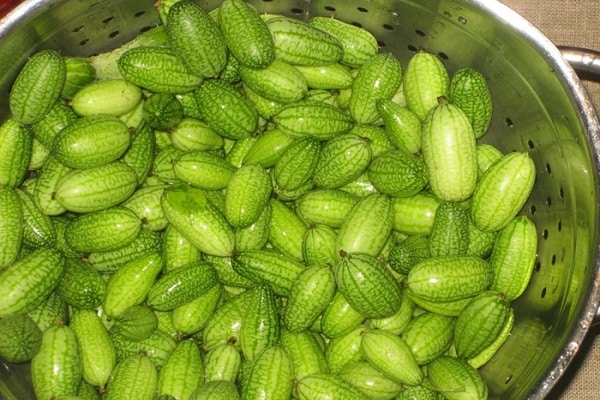
You should take into account the exactingness of the mouse watermelon to the structure of the soil. The plant does not tolerate acidification: the lashes begin to rot. The formation of a crust of the upper layer leads to the cessation of growth. To solve the problem will help "dry watering" - loosening to a depth of 5-10 cm: the crust is destroyed, gas exchange improves.
Melotria does not tolerate weeds. Harmful plants oppress her. The plant requires sunlight, but is sensitive to excess (leaves get burned).
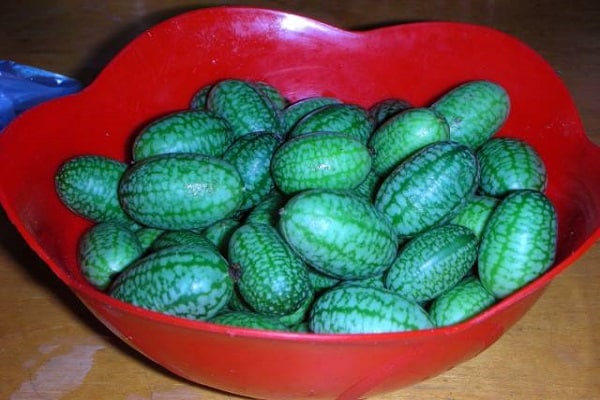
It is not recommended to place plantings next to cucumbers, pumpkins, zucchini, squash, watermelons, melons. They oppress each other.
It's real to grow a mini pumpkin in the middle lane. It is required to follow the rules of agricultural technology.

